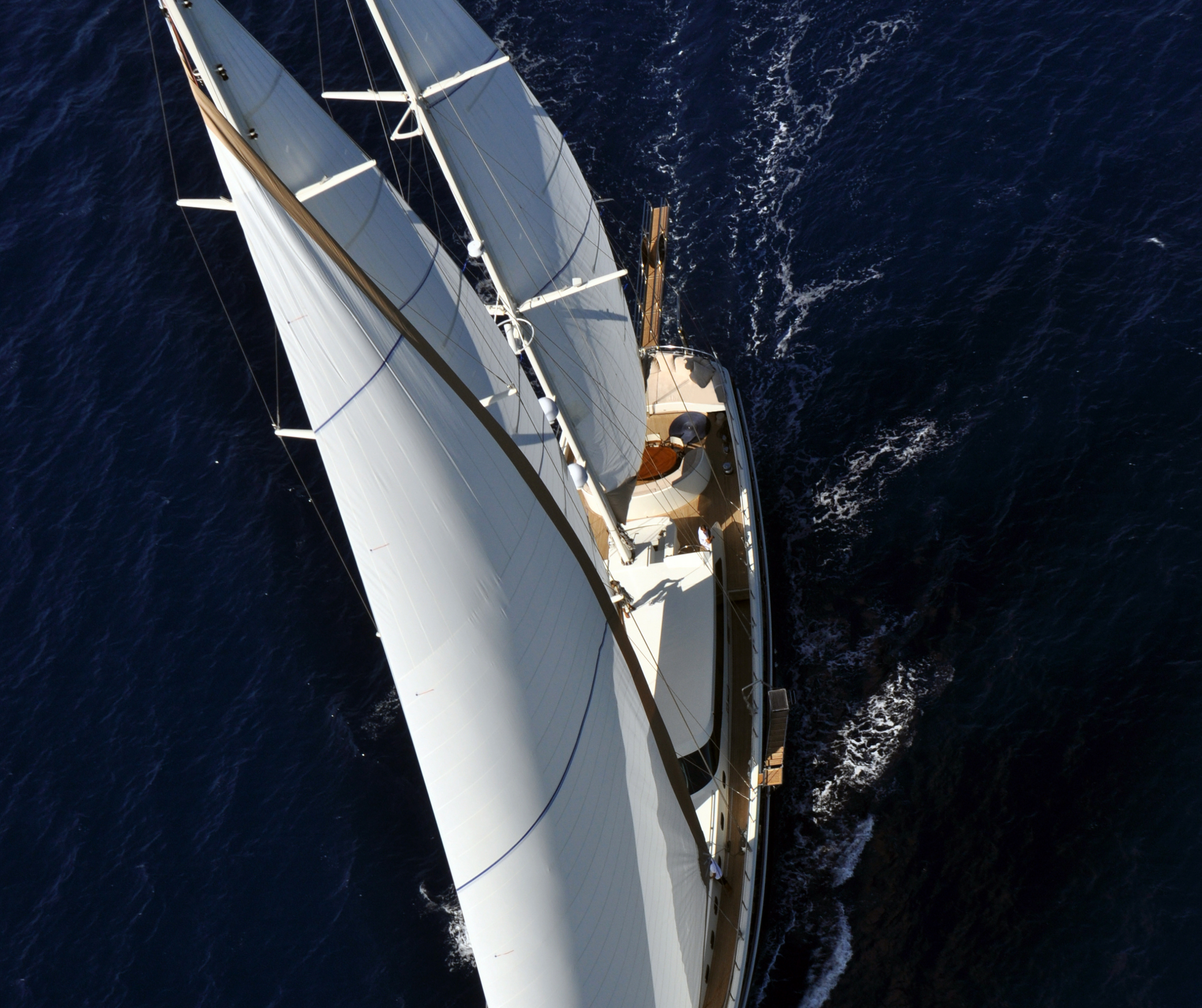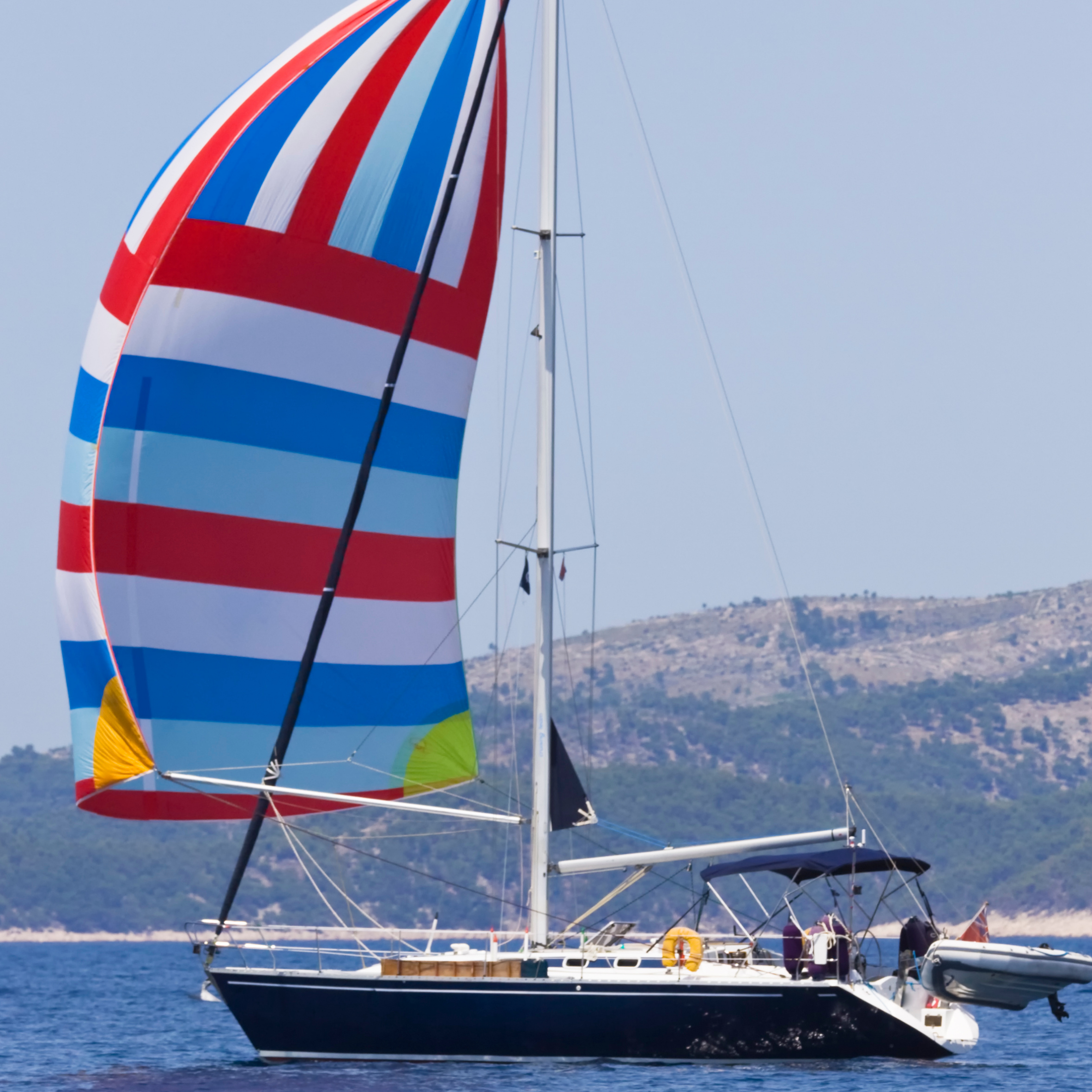WHAT ARE THE DIFFERENT SAILS ON A SAILBOAT?
If you’re new to sailing, it can be hard to recognise and memorise all the different types of sails that are used on a modern sailboat. In this article, we’ll run through the main categories of sails and introduce you to some less popular ones, too.
MAINSAIL
This is the most common type of sail and the one most people recognise. Mainsails are attached to the boom of a sailboat and slide through the mast to get raised. These sails tend to be quite powerful, as they have a large surface area.
Being right in the middle of the boat, and fully configurable with the boom, a mainsail works well in any wind direction. However, when running downwind, it can block the wind from reaching the headsail, slowing the boat down.
HEADSAIL
The headsail is located at the bow, on a furler or forestay that is connected to the mast and the deck. It’s usually smaller than the mainsail, so it can’t catch as much wind. This type of sail is good for sailing downwind, on a broad reach, or on a beam reach.
There are two kinds of headsails:
A jib - a triangular sail positioned in front of the mast
A genoa - a large jib that overlaps the mainsail, which can vary in size.
LIGHT AIR SAILS
In lighter winds, you won’t go very fast by using a standard mainsail and jib. You can use lighter, bigger sails in these conditions to improve performance.
Spinnaker
Spinnakers are large, light sails, which fly freely and fill up with air, taking a balloon shape. You can usually recognise them from afar, as they are very colourful. Unlike other sails, they are symmetrical - the luff is as long as the leech.
To raise a spinnaker you need a spinnaker pole and a dedicated halyard. Most people also use a sock (a tapered sleeve made of mesh) to store it, which is helpful when raising and dropping the sail.
Gennaker
A gennaker (or asymmetrical spinnaker) is a cross between a genoa and a spinnaker. So it’s a little slower and easier to handle. A gennaker differs from a spinnaker because it’s asymmetrical, but it flies freely.
Reacher / drifter reacher
A reacher is a large genoa made of lightweight laminated spinnaker fabric. Being about 150-170% the size of a genoa, it offers great performance in lighter winds. However, it’s easier to handle than a spinnaker, because it’s shaped like a genoa.
Code zero reacher
A code zero is a hybrid cross between a genoa and a gennaker that is designed for close reaching. It’s roughly twice the size of a non-overlapping jib.
Windseeker
A windseeker is a small, free-flying staysail for very light wind. This sail is designed to push air onto the lee side of the mainsail. To raise it, use the spinnaker halyard.
STORMSAILS
In high winds, you can reef your mainsail and furl your headsail to slow the boat down. However, when the wind is too strong, standard sails can rip. In this instance, you need to raise stormsails - smaller sails that will allow you to keep sailing slowly, so you will have less chance of breaking something onboard.
Storm jib
This is a small triangular staysail that you can use safely in heavy weather. You typically raise it up the headstay, about ⅓ or ½ of the way up.
Trysail
A trysail can replace the mainsail in the event of a storm. It is rigged above the gooseneck - the part of the boom attached to the mast.
WHY DO SAILORS USE DIFFERENT SAILS?
Sailors tend to use the best sails for the weather conditions they are in. For example, in less than 10-15 knots of wind, using a mainsail and genoa is very inefficient. It’s best to raise a light air sail. In strong winds, on the other hand, a reefed mainsail can increase heeling. A trysail will be safer to use and make the crew more comfortable.
Ease of handling also plays a factor - having two smaller headsails requires less muscle power than using a big genoa, but it pushes the boat at a similar speed.
BOAT RIG TYPES
The type of rig of a sailboat is a deciding factor in the kind and number of sails you can use on your vessel. Let’s quickly look at the main rig types of modern sailboats.
Sloop
A sloop is the most common type of rig you see out on the water. It features one mast and two sails (a mainsail and a genoa).
Cutter
A cutter is a one-masted boat that has a mainsail and two headsails; generally a genoa or yankee (a smaller jib) and a staysail (also a smaller jib).
Ketch
A ketch has two masts, both of which have a mainsail. The shorter mizzen mast is stepped before the rudder head.
Yawl
A yawl looks almost identical to a ketch. The only difference is that the mizzen mast is stepped aft of the rudder head.
Schooner
A schooner has two or more masts. The after masts are the same height or taller than the foremast.
Each boat rig requires different kinds of sails and rigging. So choose which rig is right for you before you go boat shopping.



